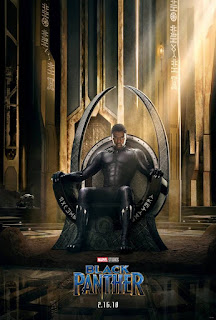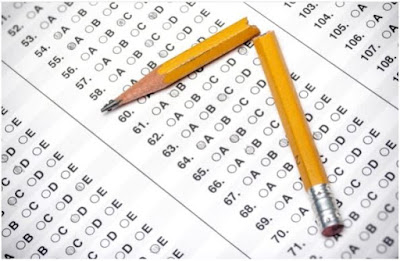All Posts (6503)
The Priestess Second Saga returns as the fledgling army organized by the Valley Knight prepares for the Tenaree attack on Sea City, the Prince of the Island Nations arrives with his fleet and to claim the hand of Princess Meru. Can the Valley Knight keep his word to his 'new' love that she will never lay eyes on the Prince and in doing so, still maintain the alliance between two countries with war imminent? Amid all the preparations the Aesir Witch Mjarga has a vision that will challenge even the Valley Knight's ability to motivate the remaining forces of Palm to stand fast and fight! The Red Spirit now revealed as a merciless Fire Goddess has licked her wounds from the unexpected challenge from the defenders of Palm. Her path to victory presents itself with a traitor and the powerful new weapons she's given the Tenaree horde at her command. The Priestess' life hangs in the balance as these forces move towards their climactic conflict. It will take the Valley Knight, his Godling son Little Fish along with the people of Palm and their new Aesir allies to stand firm against the coming tide. But can they when faced with such an implacable enemy? All will be revealed in 'The Priestess: Stones, Conflict and Legacy'
 |
| Image Source: Link below |
My book about a Black Main Character forging his own kingdom is FREE this weekend only!
The Land: Founding is FREE this weekend ONLY! 6/30-7/1 on Amazon!
https://tinyurl.com/TheLandFounding
Join 50,000 People who have fallen in love with The Land!
Please Share and tell your Friends!
The second book in the Elemental series, Return of A.G., will hit shelves and stores on July 26, 2017! It's been two years since the Elementals and Don defeated the evil android A.G. and put a stop to the Pru Empire's return. Now, De, M, Rod, Mo, and the new Elementals Jas, Lucas, Kiara, Jay, and Alex are all working together to keep their world safe. Their first order of business? Finding Samantha and Kevon Prudence, the two who made A.G. into a literal killing machine in the first place. The nine Elementals will have to travel to new locations and meet new people in order to outsmart the Prudence siblings and keep them from enacting their worst plan yet: bringing back A.G.
The book may not be coming out until 7/26, but you can reserve your copy TODAY by preordering the print or digital book here! Don't miss out on your chance to dig into the Elemental series!
a |
| Image Source: JSNN.NCAT.UNCG.edu |
Topics: Education, Jobs, STEM
Third NSF Community College Innovation Challenge rewards top entries National Science Foundation
Media Contacts Bobbie Mixon, NSF, (703) 292-8070, bmixon@nsf.gov Martha Parham, American Association of Community Colleges, mparham@aacc.nche.edu
Topics: Consumer Electronics, Economy, Electric Vehicles, Electrical Engineering, Jobs, Nicola Tesla
The Old
 |
| University of Illinois student Steve Ward and Fermilab senior technician Jeff Larson developed twin Tesla coils capable of emitting 12 feet (4 meters) of sparks. Credit: Fermilab |
The New
1. Wireless Electricity? How the Tesla Coil Works, Kelly Dickerson, Live Science
2. Wireless charging of moving electric vehicles overcomes major hurdle, Sid Assawaworrarit et al, Phys.org
Over a 100,000 people have fallen in love with the newest book sensation, The Land by Aleron Kong, the Father of American LitRPG! https://www.amazon.com/Aleron-Kong/e/B0176S6G6A
Enter the LitRPG Giveaway for a chance to win a $100 Amazon giftcard:https://gleam.io/zTCnK/june-litrpg-giveaway
 |
| Movie Poster - Bonanza.com |
Topics: Commentary, Diversity, Diversity in Science, Science Fiction
1. ‘Black Panther’ movie poster slammed as ‘too black and militant’, The Grio
2. People Are Complaining That ‘Luke Cage’ Is “Too Black”, Jessica McKinney, VIBE
3. N.K. Jemisin and the Politics of Prose, Vann R. Newkirk II, The Atlantic
A conversation with the recent Hugo Award-winner about science fiction, race, gender, power, and Trumpism
4. Slow-Walking Wakanda, #P4TC, August 16, 2015
https://igg.me/at/TheThreeBrothers
"The Three Brothers" is inspired by a folktale from a small African village. Help us bring that story to a screen near you.
The adventures of "The Three Brothers" entertain and educate. Our characters are 18, 15 and 12 and a half. They come from a culture where magic is an everyday reality and technology is an increasing part of life.
Since elementary school, I've wanted to see more animated African stories on TV and in theaters. And I don't mean talking animals. You may think this is obvious, but civilized people populate Africa. They are flesh and blood, serious and funny, laborer and professional just like you and me. So why does the dark and primitive stereotype persist in America? Because too few people have invested the time, energy and money needed to produce films and TV shows that reflect the many African cultures.
That is, until now.
Please spread the word and add your support to the campaign: https://igg.me/at/TheThreeBrothers
Folklore is vital and varied. Parables, riddles, legends, and folktales define cultures and help young people learn right from wrong, their place in the environment and how to solve problems.
Sincerely,
Robert Penn, Creator of "The Three Brothers" and the development team at 3 Degrees Films
P.S.
I've been a member of Black Science Fiction Society for several years. This is my first blog post. It announces a project that I've been working on since 2007 when I made my first of two trips to a remote section of Sierra Leone, West Africa. A traditional storyteller told me a riddle, which he left unanswered. He requested that I write it down and make it my own. I did that, initially in prose and later as a screenplay. Around 2011, I met Lightning Yumeku, an animation producer, for unrelated reasons. Subsequent to the completion of the other project, Lightning, who is also American but legally changed his name, asked if he could read some of my work. I shared “The Three Brothers” screenplay with him. After reading it, he suggested that I develop it as a family-oriented 30-minute animated series. I developed the primary characters - including the titular brothers Bala, Mamoun and Saiya Mansaray, and the villain Sumaro, who lives in two worlds, as well as secondary characters such as Mr. and Mrs. Mansaray, the chief and elders of their village, and the classmates of Mamoun and Saiya who are still in school. I also prepared a springboard for 72-episodes. In 2015, I entered into a development deal with 3 Degrees Films, the animation company Lightning founded. Last year, Lightning brought on a character designer and a background designer. They've done amazing work! As a result of our development meetings, I've added 4 episodes to the front end of the springboard. That is the four-part miniseries that will introduce the characters, their world, their main challenges and set the young men on the paths they’ll follow throughout the series.
Hi All,
About thirty years ago I started my journey into creating a fantasy world, one that was culturally inclusive, for a global audience. Now, I have the honor of seeing it come to life at Stranger Comics, working with incredible artists, and telling stories that hopefully reflect not only our reader, but also our stories. One such tale is NIOBE: She is Life. I wrote with Amandla Stenberg (Hunger Games, Everything Everything) and Ashley A. Woods did the beautiful art. Darrell May on layouts. With covers by Hyoung (The Last of Us) to Jae Lee (The Dark Tower) on the sequel She is Death. Sheldon Mitchell (The Darkness) does the interiors on the sequel and they are all incredible.
She is Life is a beauty and the beast love story threaded with murder and mystery that leads to all out war, about a young girl who has returned to her ancestors to find her faith. But she finds more than what she bargained for in the coming of age tale.
"With a world divided, who do you turn to?"
This first volume became the first ever nationally distributed comic with a black female author, artist, and hero in the history of comics and I am so happy to share the story and world with you. In the sequel, She is Death, Niobe becomes a badass bounty hunter, tracking down human traffickers and traders. If you get a chance, please check Niobe out as we are 2 weeks away from finishing a kickstarter campaign. We have already smashed through our target, so now it is just free goodies with stretch goals.
Also as ADD ONS, you can grab the DUSU Path of the Ancient hardcover (a tale of Niobe's tribe) and the Niobe Pathfinder module, among other things.
HERE IS THE LINK TO NIOBE SHE IS LIFE!
I hope you enjoy!
Best,
Seb
Topics: Existentialism, History, Politics
1. Steve Bannon, Trump’s Top Guy, Told Me He Was ‘a Leninist’, Ronald Radosh, The Daily Beast
2. Help wanted: Trump administration still has hundreds of jobs to fill, John W. Schoen, CNBC
3. WHO'S RUNNING THE GOVERNMENT? Trump has yet to fill 85% of key executive branch positions, Sonam Sheth, Business Insider
Loyalty is something we all strive for and want from others. Its a big word that carries a lot of weight with it. This place this website this society is where it will begin. Jarvis challenged me so i am answering that call and let see what happens when you are all challenged as well. You see we need each others help not later now! Lets put something to the test lets see what would happen if we all supported each other in our endeavors. Share the knowledge we have with each other to make the whole successful I dare you. We have to build trust in each other and not burn each other that would be too easy. Everyone brings something different to the table that's for sure. I see many groups and forums on here let it be the base to helping each other with coming up together. Just imagine the great writers on here teaming up with the great artists on here to make an awesome book come to life. Now go a step further and team up with the awesome animators and make a great new show together? Share the recognition share the fame You know who you are in each place lets help each out now, not halfway but give it your all alliances could bring out great things in each of us.....I DARE YOU TO SEE WHAT HAPPENS!
 |
| Credit: michaelquirk Getty Images |





